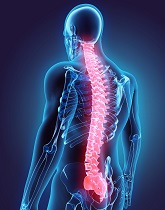 |
Halloween Tips for Trick-Or-Treat Night
nutrition411
 When you arrive home from work on Trick or Treat night, it seems like the bewitching hour already has hit your house at full tilt. The kids are so excited for the evening's events that they have magically changed into their costumes and are levitating to the door, drifting past any plans you have made for dinner. Your mind is quickly assaulted by the following questions: "Should I make my children eat dinner or is it not worth the battle?"
"How many houses equate to an adequate candy supply?"
"What about the increase in childhood obesity?" The holidays are endless from now until Valentine's Day, and each one has its own sweet fest! You certainly do not need all of this candy around the house. Can you throw half of it out when your children are not looking? Do your dentist's kids go trick or treating? It is important to remember that one night of trick-or-treating does not make a fat child or a bad parent! Here are a few simple suggestions to help you get through Halloween night and the other 364 days that follow. Have a plan
Make a plan after asking for your children's input. Feed your children a nutritious dinner. A group of hungry, dehydrated, sugar-intoxicated goblins is a frightening picture for any parent! Plan dinner ahead of time with your children's help. Let them know that you will eat early on Halloween night, so that they will have all the energy needed for a successful Trick-or-Treat night. Make sure they drink enough fluid. Children can get overheated in Halloween costumes, especially when it is combined with running from house to house throughout your neighborhood. Set limits in advance
Ask your children to help you decide on the route you will take, how many doors you will knock on, and what hour they will turn back into 'pumpkins.' Having an end goal will help you avoid the 'just one more' or 'but we have not gone to..' meltdown that persists all the way home. Agree on a candy consumption limit
Agree on how much candy your children are allowed to eat on Trick or Treat night and each day thereafter. You may want to make a similar confidential agreement with yourself. Note: 'unlimited access' or 'until the chocolate is gone' is not a good plan. Provide healthy snacks
Keep healthy between-meal snacks in view and accessible. A bowl full of juicy red apples, bananas, or seasonal fruit is a better centerpiece than Skittles, M&M's, and Tootsie Rolls. Keep the candy out of sight. Assign a kids' shelf in your refrigerator and fill it with low-fat yogurt, low-fat cheese cut in interesting shapes, and fresh-cut vegetables. Teach and model moderation
Do not give candy more status than it deserves. In some instances, the more something is forbidden or overly restricted, the more desirable it becomes. Teach and model moderation. All foods can fit, if we are reasonable about the amount and frequency. Do not attach emotions to candy
Try not to use candy to reward, bribe, punish, or convey love. By attaching emotions to certain foods, you may inadvertently set the stage for disordered eating in the future, including undereating, anorexia, overeating, and obesity. Begin some new family rituals
Do not make the holiday all about the candy. Make it a time to begin new family rituals, such as stuffing a scarecrow full of leaves for the front porch. Carve pumpkins and roast the seeds. Hold an annual scavenger hunt for fall items, such as acorns, pinecones, woolly caterpillars, animal tracks, and colorful leaves. Begin a new photo album that holds pictures of Halloween celebrations, past and present. Keep it safe
Above all, have a safe and fun Halloween. Your children are only small for a short while!
|
 |
Welcome! We hope you will benefit from our newsletter information. Please let us know if there is any topic you would like to have information on for our future newsletters.
Other Articles
To add/correct an email, click on newsletter sign-up @ doctorwerner.com. To cancel newsletter, please click on "Unsubscribe" at the bottom of this page.

About Our Practice
Dr. Werner has been in practice in Houston for 30 years treating professional Olympic, college, and school athletes; various dance companies including Houston Ballet, and touring theatre and musical groups. He cares for all family members from pregnancy through grandparenting.
Convenient location and availability will fit into the busiest schedules. Dr. Werner treats all acute and chronic conditions with chiropractic manipulation, spinal decompression, massage therapy, rehabilitation, acupuncture, and various physical medicine modalities. His many post graduate certifications allow him to create a unique treatment program customized to the individual's needs.
Dr. Werner specializes in treating sports, spinal, musculo-skeletal (soft tissue) injuries, auto and work accidents, with an emphasis and specialization in frozen shoulder. Dr. Werner is committed to his community through various civic and professional activities. He is a Diplomate, National Board of Chiropractic Examiners as well as a member of the American Chiropractic Association, Texas Chiropractic Association, Texas Chiropractic College Alumni Association, the ACA Council on Radiology, and the Foundation of Chiropractic Research and Education.
Dr. Werner has dedicated his career to educating people about good health and wellness through philanthropic activities with the Easter Seals as well as being a featured speaker and guest lecturer for many corporations, schools, health centers, and clubs.
|
|

